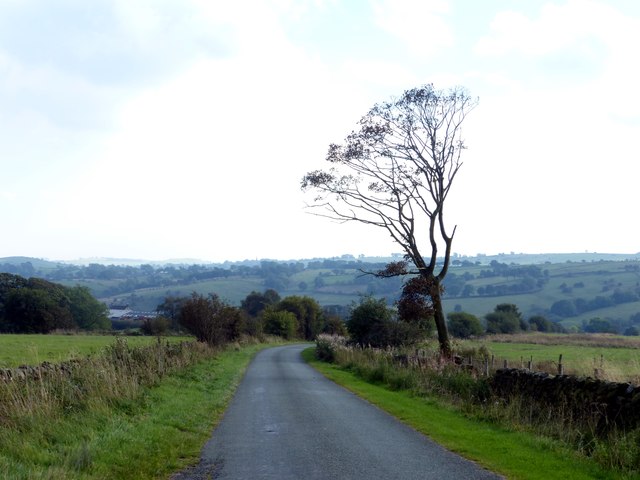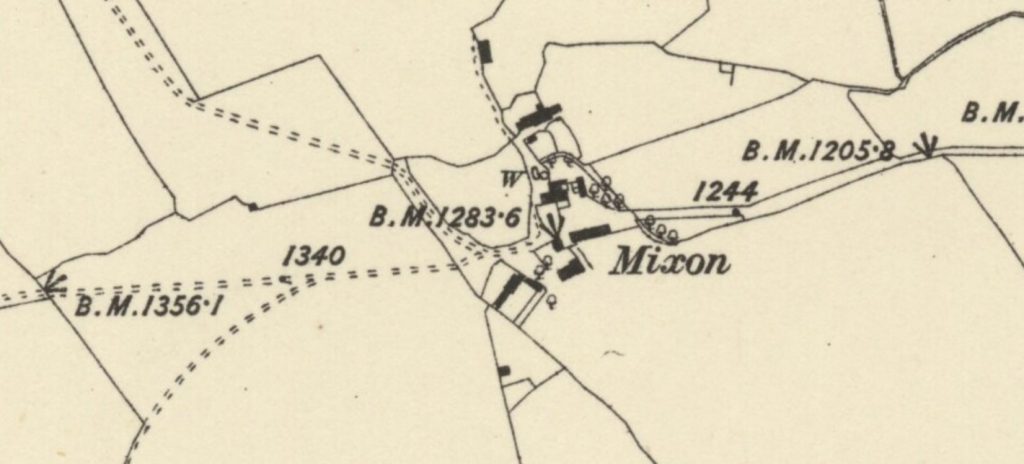Cake-Eating Fairy in 19C Staffordshire March 10, 2018
Author: Beach Combing | in : Modern , trackbackIntroducing Nancy
This little passage is a troubling one for all kinds of reasons. In the mid-late nineteenth century, an itinerant preacher recounted an experience from his time in Staffordshire (a Midlands English county that ranged, in this period, from the beautifully wild to the grimily industrial). He had evidently begged a bed in the kitchen one evening in a Staffordshire farm in the moorlands. The photo at the head of this post should give you some idea of the landscapes we are dealing with.
I went into a farmhouse to stay a night, and in the evening there came a knocking in the room as if some one had struck the table. I jumped up. My hostess got up and ‘good-night,’ says she, ‘I’m off’. ‘But what was it?’ says I. ‘Just a poor old fairy,’ says she; ‘old Nancy. She’s a poor old thing; been here ever so long; lost her husband and her children; it’s bad to be left like that, all alone. I leave a bit o’ cake on the table for her, and sometimes she fetches it, and sometimes she don’t’.
Fairies and the Dead
There is a great literature on fairies and the dead, and some claims (e.g. Lewis Spence) that fairies are the dead. This is either unconvincing for Britain and Ireland or backdated, on shaky evidence, to a Neolithic past of which we know very little. Nancy is clearly a ghost. Four reasons for this. (i) The name ‘Nancy’ is far too proletarian for a fairy; Titania is blushing as I write this. (ii) ‘Old’ is frequently applied in 19C England to ghosts and bogeys; (iii) fairies may have husbands and children but they do not die; and (iv) fairies usually eat dairy not cake.* All this begs the question, then, why on earth, is Nancy called a ‘fairy’ here? The simple answer is that in the Midlands ‘fairy’ was used surprisingly late to mean ‘creepy badass spirit’. Folklore terminology! Cock the pistol and put it in your mouth…
1887 OS Map (surveying 1878)
Nancy Has Her Cake and…
From a later article (Witcutt) we learn that Nancy haunted Mixon in the Moorlands, though we are not told which of the four or five houses there: can anyone actually identify her home, drbeachcombing AT gmail DOT com. But here, from the keyboard of one who has spent hundreds of hours hunting these immaterial monsters, is a reconstruction of her likely biography: Beach can fill in the blanks with his eyes closed and his fingers dancing on QWERTY. Nancy was, ‘a long time ago’, a native of the farm. Her husband and children died in a terrible accident: thinking of English folklore this means (a) robbers in the house/a Scottish raiding party; (b) river in flood; or (c) ‘plague’. She lived for many years alone but her neighbours were terrified of her and her isolation. After her death, she took to haunting the property. She can be placated by a little cake on the table.
Chain of Custody
This brings us to the ‘chain of custody’ for this evidence. In 1896 one Mary Dendy wrote a letter to the journal Folklore, which was published in the December issue and entitled ‘Staffordshire Superstitions’. She had taken a series of stories from Elijah Cope, an ‘itinerant preacher’. ‘I give, as nearly as possible, exactly what he said.’ Mary, then, was writing at the end of the nineteenth century what Elijah had lived a couple of years, a decade or perhaps two or three decades before. Note that there may be a second source for this as the following (very good) site has some extra information not in Dendy’s letter. A mystery to be plumbed…
Sources
Mary Dendy, ‘Staffordshire Superstitions’, Folklore 7 (Dec., 1896), 398-399
W. P. Witcutt, ‘Notes on Staffordshire Folklore’, Folklore 52 (Sep., 1941), pp. 236-237
*Or do they, a later article on Staffordshire folklore from 1941 (Witcutt) tells us that ‘the fairies of Lady Meadows in Ipstones parish would upset the cottages and farms until bribed by pieces of cake left as offerings.’ There is regional cuisine among humans, why not among fairy carrion.




